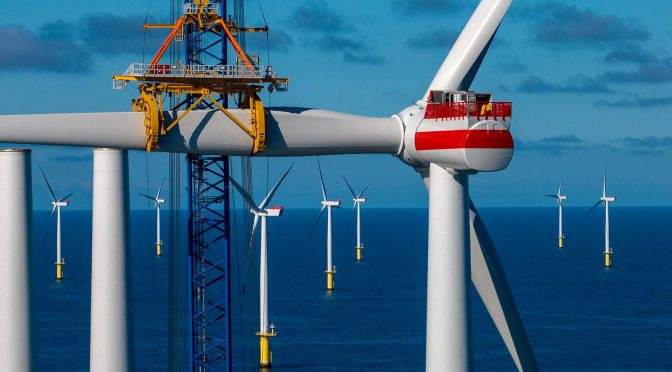As the world moves towards renewable energy sources, wind turbines have become an increasingly common sight on the horizon. These towering structures have been praised for their ability to harness the power of the wind and convert it into clean, sustainable energy. However, their aesthetics have often been a point of contention, with some critics arguing that they detract from the natural beauty of the landscape. In response to this, designers and engineers have been working to create next-generation wind turbines that not only function efficiently but also blend seamlessly into their surroundings.
One of the key aspects of blending art and science in wind turbine design is the consideration of form and function. This means that designers must take into account not only the technical requirements of the turbine but also its visual impact on the environment. By doing so, they can create structures that are both efficient and aesthetically pleasing.
One example of this approach is the development of vertical-axis wind turbines (VAWTs). Unlike traditional horizontal-axis wind turbines (HAWTs), which have blades that rotate around a horizontal axis, VAWTs have blades that rotate around a vertical axis. This design allows for a more compact and visually appealing structure, as the blades can be positioned closer to the ground and the overall height of the turbine can be reduced. Additionally, VAWTs are often more efficient in areas with turbulent wind conditions, making them a practical choice for urban environments.
Another innovative design that combines art and science is the use of biomimicry in wind turbine development. Biomimicry is the practice of looking to nature for inspiration in solving human problems, and it has been applied to various aspects of renewable energy technology. In the case of wind turbines, designers have looked to the natural world for examples of structures that can efficiently harness the power of the wind while also blending into their surroundings.
One such example is the development of wind turbines inspired by the shape of bird wings. These turbines have blades that are curved and twisted, much like the wings of a bird in flight. This design not only allows for more efficient energy capture but also reduces the noise generated by the turbine, making it a more attractive option for use in populated areas.
In addition to biomimicry, designers are also exploring the use of color and materials to create wind turbines that blend seamlessly into their surroundings. For example, some companies have developed turbines with blades that are coated in a reflective material, allowing them to blend in with the sky and reduce their visual impact. Others have experimented with using colors that match the surrounding landscape, such as green for turbines located in grassy fields or brown for those in desert environments.
Finally, some designers are taking a more artistic approach to wind turbine aesthetics, creating structures that are not only functional but also visually striking. For example, the Dutch artist and engineer Daan Roosegaarde has developed a concept for a wind turbine that doubles as a light installation, with LED lights that change color based on the speed of the wind. This not only creates a visually appealing structure but also serves as a reminder of the importance of renewable energy.
In conclusion, the blending of art and science in the design of next-generation wind turbines is an important step towards creating structures that are both efficient and aesthetically pleasing. By considering form and function, incorporating biomimicry, and experimenting with color and materials, designers can create wind turbines that not only harness the power of the wind but also enhance the beauty of the landscape.


